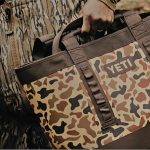JP Morgan trimmed its earnings estimates for VF Corp and placed the stock on “Negative Catalyst Watch” on concerns over ongoing wholesale pressures facing The North Face, Vans and TNF both fighting softer DTC traffic, and elevated inventory levels impact on margins.
JP Morgan’s note, which was issued Monday, October 21, 2024, arrived ahead of VF ‘s report of second-quarter results on October 28 and its Investors Day event scheduled for October 30.
Based on his team’s recent fieldwork and access to VF management, Matt Boss lowered his estimate for VF’s second quarter ended September 30 to 36 cents a share, below Wall Street’s consensus target of 37 cents and compared with year-ago EPS of 63 cents. JP Morgan expects revenues to decline 8 percent year over year in the quarter versus analysts’ consensus estimate calling for a decline of about 7 percent.
JP Morgan noted that VF’s management confirmed that 2Q’s guidance for “sequential” revenue improvement was in reference to the 10 percent revenue decline excluding Supreme revenues and not the 8.6 percent reported revenue decline.
Among brands, JP Morgan now expects Vans’ sales in the second quarter to decline 18 percent on a constant-currency basis against a 21 percent decline in the first quarter and analysts’ consensus forecast calling for a decline of 15 percent. Boss expects the sequential improvement to be driven by wholesale as VF has increased Vans’ supply in the marketplace.
JP Morgan now expects TNF to show a 7 percent decline on a constant-currency basis in the second quarter, worse than the 2 percent dip seen in the first quarter. Analysts’ consensus forecast calls for TNF to show a decline of 15 percent in the second quarter.
Boss said TNF faces ongoing headwinds “associated with wholesale softness” as well as a sequentially tougher 1-year comparison by 500 basis points. The analyst added, “Further, our work points to continued wholesale challenges at The North Face, w/mgmt citing reluctance from retail partners to take on inventory risk early following a warmer start to Fall/Winter last year.”
Finally, Boss said JP Morgan’s field-work shows that store traffic headwinds are likely impacting brands across VF’s portfolio, particularly Vans and TNF. He said the weakness was in line with Nike’s recent comments on “below-plan traffic in stores/digital and reduced traffic in all territories & lower ASP due to higher discounts at the Converse brand.”
On margins, JP Morgan expects VF to show gross margin expansion of 18 basis points in the second quarter versus analysts’ consensus estimate calling for an improvement of 25 basis points and VF management’s “up slightly” year-over-year guidance.
Boss noted that while lower expenses are expected to support the improvement, VF’s management noted that days on hand still stood 15-20 days over historical levels at the end of the first quarter and VF’s first-quarter 10-Q showed the Outdoor segment’s operating margins were particularly impacted by higher promotional activity.
Boss added, “To that end, our global fieldwork points to lower quality of sales throughout APAC in particular, with increased promotional activity across the digital marketplace to drive unit volumes throughout China at The North Face, in addition to ongoing inventory normalization throughout the wholesale channel.”
JP Morgan reduced its guidance for VF’s current fiscal year from 46 cents to 30 cents and fiscal 2026 from 93 cents to 65 cents. The investment firm maintained its “Neutral” rating on VF at a $16 price target. On Monday, shares of VF slid $1.42, or 7.2 percent to close at $18.18. Shares closed Tuesday at $17.76.
Boss concluded, “While we see continued macro headwinds impacting our coverage broadly (rising wages, elevated promotional activity and supply chain costs, higher costs of digital customer acquisition) and a multi-year timeline to Vans’ topline recovery, we see a profit inflection over the next 12-18 months supported by CEO Darrell’s cost savings program and self-help gross margin drivers, in addition to a focus on deleveraging the balance sheet, supporting a more balanced risk/reward.”
Image courtesy The North Face
















